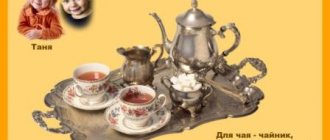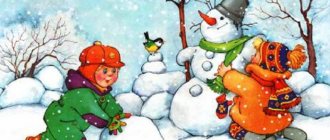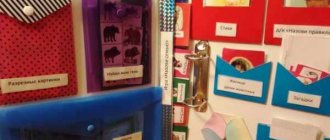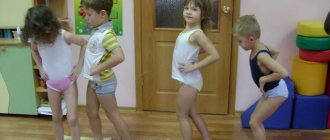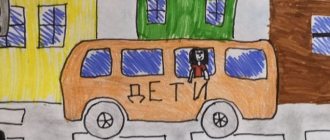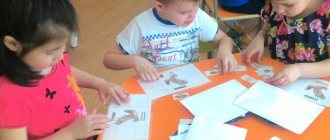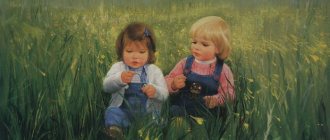Homework on the lexical topic: “Our region.” Our city" - senior speech therapy group
Our region. Our street.
Conversation: −
look at illustrations, photographs and postcards depicting our Land, what is it rich in?;
- ask the child the name of the city in which he lives, the street on which his house is located;
- Pay the child’s attention to what the city is named after, what it is famous for, tell us about the most important events that happened in our city, what attractions it has;
- “Select a sign and an action”
Region (which?) - polar, northern, native, rich,...
The city (which one?) is clean, bright, noisy, cheerful, snowy,...
Street (what?) – long, quiet, narrow, green,...
The townspeople (what are they doing?) - building, cleaning, repairing, having fun, decorating,...
- "Name it after example"
street - street
–
no streets
city –
town
–
no town
shop – shop
–
no shop
bridge –
bridge
–
no bridge
courtyard – courtyard
–
no yard
address –
address
–
no address
flashlight – flashlight – no flashlight
road
– path – no path
- "Count 2.5"
One green square two green squares five green squares
One tall building two tall buildings five tall buildings
One city pharmacy two city pharmacies five city pharmacies
One large area two large areas five large areas
One football field two football fields five football fields
- "Say it with the word 'urban'"
transport – city transport
apartment –
city apartment
houses – city houses
park -
city park
streets - city streets
theater –
city theater
post office – city post office
building -
city building
school - city school
station -
city station
residents - city residents
church -
city church
- Complete the sentences by changing the word WENT,
consolidating the skills of using prefixed verbs
Sasha to the house... (approached)
The boy across the road
...(crossed)
He entered the entrance ...(entered)
Over the bridge
...(crossed)
Sasha quickly left the entrance ...(went out)
Sasha to the park
...(reached)
From the house ...(moved away)
He went around the tree
...(walked around)
Our town
- Parents are recommended:
- remember with your child the name of the city in which he lives, the street on which his house is located, name the main street of the city;
- pay attention to what the city is named after, what it is famous for, tell about the most important events that happened in your city, what attractions it has;
— look at illustrations, postcards and photographs depicting your city;
- repeat with the child the home address, the address of the kindergarten;
¾ attitude towards your city and your street;
¾ why do you need to know your address?;
¾ Who can you tell your address and who can’t?
- remind you of the need to follow traffic rules.
- Didactic game “Name which one”
(formation of complex words):
house (what?) - multi-story, one-story, apartment.
3.
Didactic game “One - Many” (formation of the genitive plural of a noun)
:
one house - many houses, one street... (village, city...).
4.
Exercise in word formation using suffixes .
House - house, house, house.
City - town, town, settlement.
5.
Didactic game “Pick a sign”:
street (which one?) - quiet, noisy, narrow, wide, green
city (which?) - ..., house (which?) - .... apartment (what?)¾…
6.
Didactic game “Here and There”
Here is a house, and there are houses; here is a street, and there is ¾ ...; here is a store, and there is ¾...;
here is a pharmacy, and there is ¾ ...; here the area, and there ¾...; here is a flowerbed, and there is ¾...;
7.
Exercise in forming the plural of nouns
“Count 2, 5”
One square, 2..., 5...; One street, 2..., 5...; One house,… 2.., 5…
8.
Compose the story
“The House Where I Live” (child’s free story).
9.
We teach the child
to clearly pronounce words and phrases: traffic controller, sidewalk, policeman, traffic rules.
MAGAZINE Preschooler.RF
THEMED GAME “MY CITY”One of the most important and striking traits of preschoolers is curiosity. Children constantly ask questions and want answers right away. If adults cannot or do not want to explain to children what interests them, their curiosity disappears. Therefore, the only option for introducing children to the world around them is to learn how to answer any questions children may have.
In early preschool age, all the child’s activities are subordinated to one leading need - knowledge of the world around him and himself in it. The main means of satisfying this need still continues to be the sensory (sensual) development of reality through sensations, sensory perceptions, and visual representations. But at this age the thresholds of sensations begin to decrease. This is compensated by an increase in visual acuity and accuracy in distinguishing colors, development of hearing, and accuracy in estimating the weight of objects.
The most characteristic actions are those that allow the child to examine objects, highlight their most typical properties - to separate and combine sensations, giving them the characteristics of sensory standards, generally accepted patterns of perception. Such activity lays the foundation for the transition to a higher stage of development - from visual-effective to imaginative thinking. Rhythm and clarity become the most important conditions for the development of normal perception and comprehension of what is perceived.
It is very important during this period to teach children to name their hometown (village). Encourage them to talk about where they walked on weekends (in a park, square, children's playground, in the country). Pay attention to buildings and remember the streets along which children walk from home to kindergarten, what attractions there are in their hometown, what rivers or even seas are nearby.
To get acquainted with the city, to expand knowledge about the world around us, and to develop communication skills, I offer the game “My City” .
"MY CITY"
Goal: Expanding children's knowledge about the world around them, developing children's communication skills. Forming an idea of classification based on characteristics.
Age: 3-8 years
Number of players: group of children 10-12 people
Necessary equipment: “city” , with marked streets. Sets of geometric shapes (circle, square, triangle, rectangle), primary colors. A set of rectangles with the name of administrative buildings: school, kindergarten, pharmacy, post office, hospital, cafe, store, etc.
Game description: At the beginning of the game, the presenter reads a poem for finger gymnastics “My City” .
I love walking around the city! (They walk with their fingers on their knees) I like to watch, (Turns the head left and right)
I love counting! (clench - unclench their fists) Streets - once! (Bend fingers one at a time)
Area – two! Park - three! And four - I live in an apartment! Five - I'm walking in the park again!
Six - I’ll go to Belaya and look at the water! Seven – “Nalmes” , Palace of Culture, Beautiful and huge,
And it is located in the center! Eight - New Year's tree! Nine - I came across the Great War Monument...
Ten is our cinema! I will go around all of Maykop! (They walk with their fingers on their knees) I love the city very much!
(Clench and unclench their fists)
Children remember and name administrative buildings and stick them in random order on the playing field. Then they place the house figures according to the names of the streets. For example: on VESENNYA (the color with which spring is associated) there can be houses of various shapes, but only green. On the street "MORSKOY" - blue (light blue). And on the street of “MULTI-COLORED SQUARES” there are only squares, but of different colors, etc.
When the city is built, you can proceed to the next stage of the game. Each participant chooses a “house” where he “lives” and gives it a number (you can write it on a figure). A preliminary conversation is held “Where do I live?” . Children name their street and house or apartment number. Then the adult starts the game: “Katya needs to go to the store. What is the best way for her to get through? Children “pave” the way to the desired building, while naming which streets they need to go through and past which buildings. Every child should be a leader. That. children explore the city, learn to navigate the area, and expand their knowledge about aspects of public life.
Play is the most progressive method of teaching preschoolers. It is through play that a child’s abilities such as intelligence, resourcefulness, the ability to think logically, compare and remember are more easily formed. Play makes the learning process less tedious and much more effective.
| Next > |
Quiz for children of the preparatory group of kindergarten. My city
Quiz for children 6-7 years old “My country.
My land. My city. My street" Purpose: Testing and activating children's knowledge and independent judgments about the country, native land and city. Objectives: • consolidate children's knowledge about our country, native land and city; • systematize children's knowledge about the symbols of the state: flag, coat of arms, anthem. • expand children's horizons; learn to answer questions depending on the content, using an accurate, expressive vocabulary; • to cultivate in children patriotic feelings, respect for all nationalities, love and respect for Russia. Materials and equipment: - laptop, multimedia projector, multimedia presentation; - images of parts of the house (30 pieces), envelopes with cut parts of sayings and proverbs about the Motherland, an envelope with parts of the Russian flag, an envelope with different images of the coat of arms of Russia, sound fragments of anthems, images of cultural symbols of Russia (matryoshka, Dymkovo toy, accordion), 9 scarves, folk instruments (spoons, metallophones, whistles), 3 album sheets of paper, 3 packs of felt-tip pens. Musical material used in the game “Pilots”: Idea, selection of music, mix - Kholodnaya I.V.
“Kangaroo dot, ru” by Zhanna Kolmagorova “Song about penguins” lyrics by A. Gorokhov, music by V. Kuprevich “Turtle” Music by A. Varlamov. Words by R. Panina “Dolphins” music. A. Varlamov “Merry monkeys” Y. Seliverstov “Good mood” lyrics. Natalya Ososhnik, music Vitaly Ososhnik Preparatory work: implementation of a child-adult project (with the participation of parents) - the books “Streets of my city”, “Professions of my parents”; exhibitions in the groups “Folk Crafts of the Urals”, “Treasures of the Urals” (exhibition of stones), “Sights of the City of Serov”; exhibition of books by writers and poets of the city of Serov; reading tales by P.P. Bazhov, exhibition of drawings and creative works “My City”, acquaintance with national customs (holiday “Svyatki”). Progress of activities
To the music of the song “My Russia” (G. Struve), children enter the hall and sit down at tables in subgroups.
The leading ball is large, there is a country on it, a city in it, and houses in it. The house is on one street, inconspicuous, small. This house, country, land - This is my Motherland! Presenter Today we have gathered, guys, to tell each other what we have learned about our homeland, our region, our city. You have to answer 10 questions and complete 10 tasks. You are divided into groups. Each group's responses will be scored. For each correct answer and correctly completed task, the team receives a part of the house, from which we will later make up a city. The better and more correct your answers are, the higher and more beautiful your houses will be. Who wants to build the tallest and most beautiful house? (children's answers)
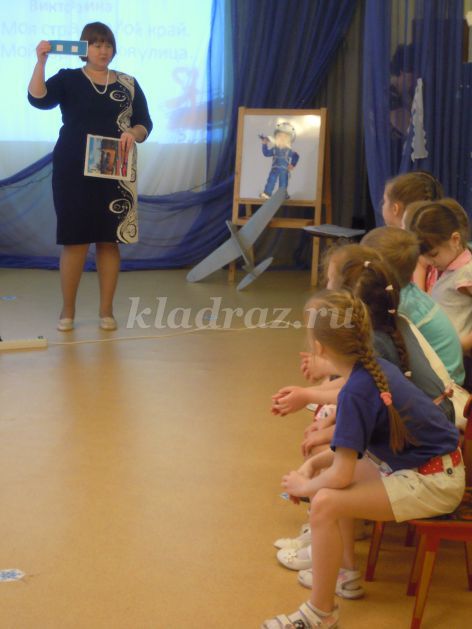
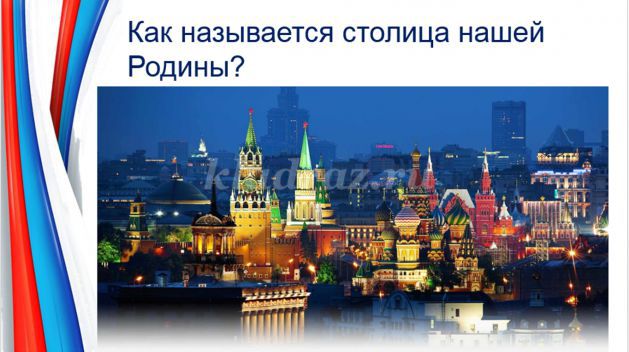
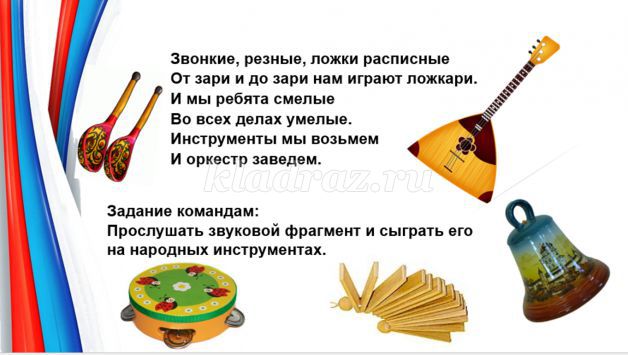
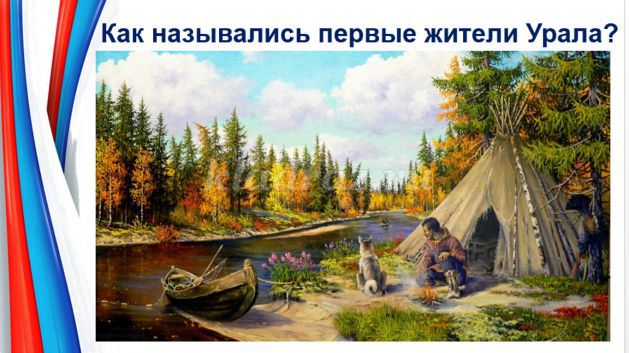
The Khanty and Mansi lived in tents. Game “Who can build a tent faster” (children use large scarves to build a tent, which team is faster)
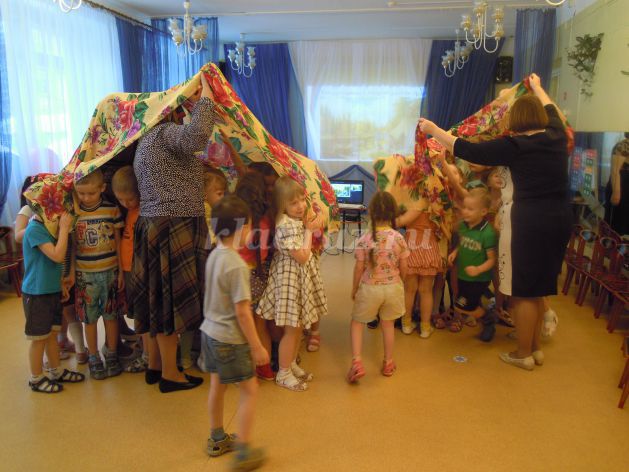
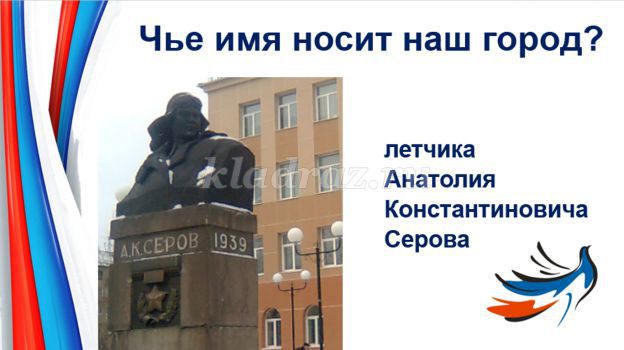
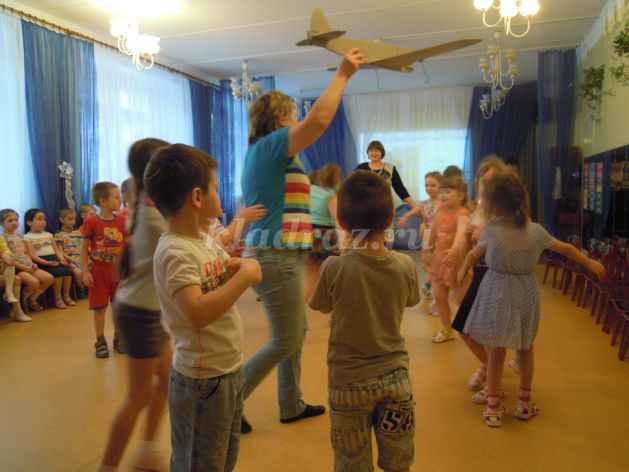
Children listen to the announcer and perform the suggested actions: 1. “Pilots, to the airfield!”
Children sit down 2. “Let’s start the engines!” Children sitting (a prerequisite for alternating motor activity and rest) make a “winder” with bent arms. 3. “Take flight!” Children pretend to fly an airplane (fly) 4. “Attention, landing!” Children squat down. 5. Next, imitative movements of the animals of those countries and continents where the planes arrive are performed. Presenter We return to our city. Attention, landing! The children take their places at the tables. Leader Teams that successfully complete the task receive the eighth floor of the house. Presenter Attention, this is the ninth question of our quiz. 9. Game “Guess what I wished for” Images of various sights of the city of Serov are shown to the children. The presenter makes a wish for one of them. Children must guess what landmark he wished for by asking any questions except a direct question about the name. A set of images for team 1: - the city administration building - an anniversary stone for the city’s centenary. A set of images for team 2: - the building of the metallurgists’ palace of culture - “The Wishing Stone” at the library named after. D.N. Mamin-Sibiryak Set of images for team 3: - Temple of the Transfiguration of the Lord - Memorial "Eternal Flame" Leader Teams that successfully complete the task receive the ninth floor of the house. Presenter Attention, this is the tenth and final question of our quiz. 10. There are many streets and squares in our city. On what street is our kindergarten located? Why is this street called Green? (children's answers)
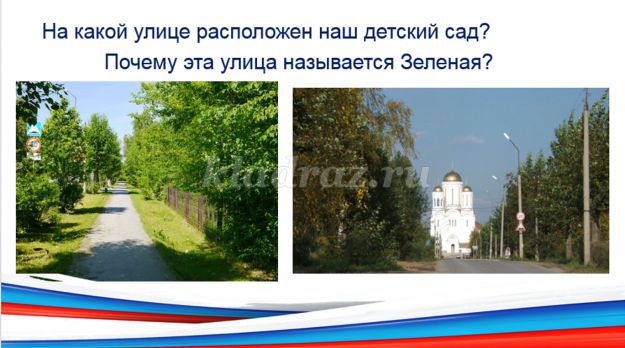
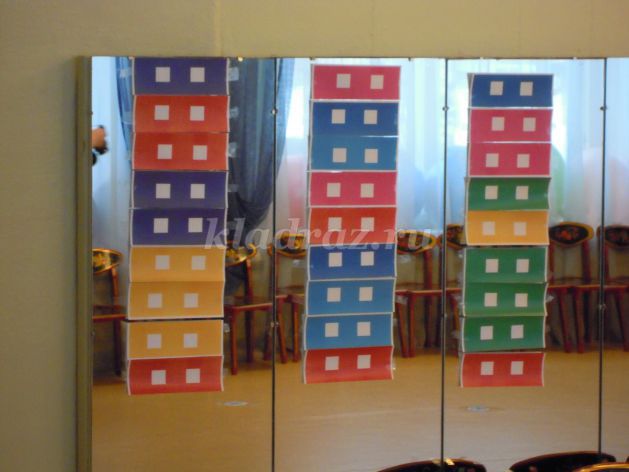
We recommend watching:
Quiz with answers on fairy tales for children of the preparatory group Interesting questions on fairy tales for children of the preparatory group Quiz with answers on the topic: Summer for children of the preparatory group Quiz with answers for children 5-7 years old. Inhabitants of Africa
Similar articles:
Quiz on the topic “Trees and shrubs” for children 5-7 years old
Quiz on the topic “Wild Animals” for children 5-7 years old
Quiz on the theme “Birds” for children 6-7 years old
Quiz with answers “Andersen's Fairy Tales” for preschoolers
Quiz with answers “Fairy Tales of Charles Perrault” for preschoolers
Outdoor games on the theme “My City” for children of senior preschool age
Outdoor games on the theme “City”
"Buses"
Methodology. “Buses” are the children’s teams “driver” and
"passengers". Flags are placed 6-7 m from each team. On the command “March!” The first players quickly walk (it is forbidden to run) to their flags, go around them and return to the columns, where they are joined by the second players, and together they again make the same path, etc. The players hold each other's elbows. When the bus (the front player - “driver”) returns to its place with a full complement of passengers, it must sound a whistle. The team that arrives at the final stop first wins.
"Traffic inspector and drivers."
Methodology. The game involves 5-6 people.
On the playing area, 4-5 parallel lines are drawn with chalk, indicating the stages of movement. Players (drivers) place their cars (chairs) behind the last line and sit on them. Drivers have driver's license coupons (cardboard rectangles). A traffic inspector sits on the opposite side of the platform, facing the drivers, with road signs and scissors in his hands. These scissors are needed to cut out the license of an offending driver. The traffic inspector shows road signs to drivers one by one. The driver, who has correctly explained what the sign requires, advances to the next line. The driver, who failed to explain this, receives a puncture (a corner of the driver's license is cut off with scissors) and a remark from the traffic inspector; his car remains in place. A player who receives four punctures is eliminated from the game. A driver who passes all stages without any comments becomes a traffic inspector, and a traffic inspector becomes a driver. The game repeats itself. Drivers who drop out of the game receive new driver's license coupons and are included in the game
"Be careful!"
Methodology. Children remember what to do and when to do it. They walk in a circle and carefully listen to the signals of the traffic controller.
At the signal: “Traffic light!” - we stand still; by signal:
"Transition!" - we walk; at the signal: “Car!” - We hold the steering wheel in our hands.
"Merry tram"
We are cheerful trams,
We don't jump like bunnies
We ride on the rails together.
Hey, come sit with us if you want!
Methodology. Children are divided into two teams. One team - trams. The tram driver holds a hoop in his hands. The second team is passengers, they take their places at the bus stop. Each tram can carry only one passenger, who takes his place in the hoop.
The final stop is on the opposite side of the hall.
"Attention, pedestrian!"
Methodology. To play this game you need three wands, painted in three traffic light colors.
The traffic controller (teacher) shows the children lined up in front of him alternately one of three batons. Participants in the game take a step back when they see a red rod, stand when they see a yellow one, and take two steps forward when they see a green one. The winner is the one who never makes a mistake. The winner is awarded a badge, postcard, and book.
"Garage".
Methodology. At the corners of the site, 5-8 large circles are drawn - parking lots - garages. Inside each parking lot, draw 2-5 circles - cars (you can put hoops). The total number of machines should be 5-8 less than the number of players.
Children walk in a circle, holding hands, to the sound of music. As soon as the music ends, everyone runs to the garages and takes a seat in any of the cars.
Those left without a place are eliminated from the game.
"Trucks".
Methodology: The players hold car steering wheels in their hands - these are trucks. They need to deliver urgent cargo. Each person has a small bag of sawdust or sand on their head. Who can run so fast as to overtake all their rivals and not drop the load - this bag
"Road, transport, pedestrian, passenger."
Methodology. Children stand in a circle, and a traffic controller stands in the middle of it. He throws the ball to one of the players, while pronouncing one of the words: road, transport, pedestrian, passenger. If the driver said the word “Road!”, the one who caught the ball must quickly name a word related to the road.
For example: street, sidewalk, curb. To the word “Transport!” the player answers with the name of a vehicle; to the word “Pedestrian!” You can answer - traffic light, pedestrian. The ball is then returned to the traffic controller. The wrong player is eliminated from the game.
"Road - non-road."
Methodology. The playing field is drawn in a line, where each line is separated from the other by one step (you can play on a wide ladder), the players stand up and the driver throws the ball to them one by one, calling out different words. If a “road” word sounds, the player must catch the ball, “non-road” - miss or throw it away; if the player matches the named word, the player moves to the next line (to the next step). The one who crosses the last line first wins and becomes the driver.
"Unusual road sign."
Methodology. In this game, children are asked to come up with an unusual road sign. They need to choose one of the objects from the surrounding world and try to transfer its properties to the road sign. At the same time, the most fantastic, most incredible options are possible. The teacher invites the children to think of some object of living or inanimate nature (cat, tree, flower, house). The teacher asks: “Could an unusual road sign somehow resemble a cat?” Children answer:
"Maybe!".
